Could Germany create a nuclear bomb?
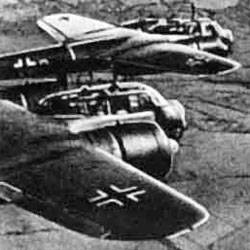 Statements made by General Groves after the war ... were probably intended to divert attention from the German isotope separation program. The idea was that if you hide the existence of the German uranium enrichment program, then you can write a story that all efforts to create an atomic bomb in Germany were reduced to unsuccessful attempts to build a nuclear reactor to produce plutonium.
Statements made by General Groves after the war ... were probably intended to divert attention from the German isotope separation program. The idea was that if you hide the existence of the German uranium enrichment program, then you can write a story that all efforts to create an atomic bomb in Germany were reduced to unsuccessful attempts to build a nuclear reactor to produce plutonium. Critical Mass: A True Story
about the birth of the atomic bomb
and the onset of the nuclear age
“Those who interrogated Heisenberg and other German scientists read their reports and, gasping in surprise, gazed at the primitive nuclear reactor hidden in a cave in southern Germany, they could not understand what went wrong. Germany began the war, possessing every conceivable advantage: competent scientists, material resources and understanding from the top military leadership. Why were the successes so modest? ”
These are the basic facts, and the main question that tormented all the post-war researchers who dealt with the problem of the German secret weapons, it sounds so real, how did it happen that Germany could not create an atomic bomb?
One of the theses is radical, namely: Germany during the war created an atomic bomb. Rather, it is necessary to look for the answer to the question why Germany, apparently, did not use the atomic bomb and other terrible weapons she had, and if she did, why we did not hear about it. But, of course, to defend such a radical thesis, you first need to prove that Germany had an atomic bomb.
From this it follows that you need to look for fairly obvious evidence. If Germany had an atomic bomb based on uranium, it is necessary to determine the following:
1) The method or methods of separation and enrichment of the uranium-235 isotope, necessary for the creation of an atomic bomb, of high weapon quality and in quantities sufficient to accumulate a critical mass, and all this in the absence of an operating nuclear reactor.
2) Complex or complexes where similar work was carried out in a significant volume, which, in turn, requires:
a) huge consumption of electricity;
b) sufficient supplies of water and developed transport;
c) a huge source of labor;
d) the presence of significant production capacity
relatively well hidden from the bombing of the Allied and Soviet aviation.
3) The necessary theoretical basis for the development of the atomic bomb.
4) A sufficient supply of uranium required for enrichment available.
5) Polygon or several polygons where you can collect and test an atomic bomb.
Fortunately, in all these areas, an abundance of material opens up before the researcher, which convincingly proves at least that in Germany during the war years there was a large and successful program to enrich and clean up uranium.
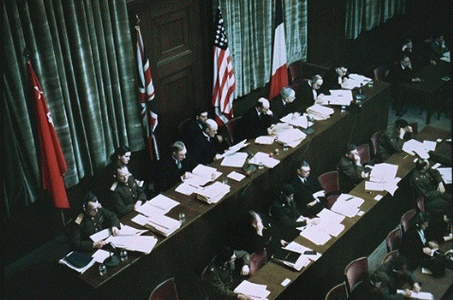
Let's start the search from the most seemingly little-fitting place, from Nuremberg.
At the post-war tribunal over war criminals to several senior executives of the huge, incredibly powerful and widely known German chemical cartel “I. G. Farben L.G. ”had to sit in the dock. The history of this first global corporation, its financial support for the Nazi regime, the key role in the military-industrial complex of Germany, as well as participation in the production of the poison gas “Cyclone-B” for death camps are described in various works.
Concern "I. G. Farben "took an active part in the atrocities of Nazism, creating a huge factory for the production of synthetic rubber buna in Auschwitz (German name of the Polish town of Auschwitz) in the Polish part of Silesia during the war years. Prisoners of the concentration camp, who initially worked on the construction of the complex, and then served it, were subjected to unheard of atrocities.
Chemical enterprises of the IG Farben concern in Auschwitz-Monowitz, winter 1944-1945
For Farben, the choice of Auschwitz as a site for building a boulder plant was logical, based on solid practical considerations. The concentration camp, located nearby, provided a huge complex of guaranteed inexhaustible source of slave labor, and, which is very convenient, the prisoners, exhausted by overwork, could without the hassle of "dismiss". The director of Farben, Karl Krauch, commissioned Otto Ambros, the leading specialist in synthetic rubber, to study the sites of the proposed construction of the complex and make recommendations. In the end, in a dispute with another possible place in Norway, preference was given to Auschwitz - “especially suitable for building a complex” and for one very important reason.
A coal mine was located nearby, and the three rivers, merging, provided a sufficient supply of water. In combination with these three rivers, the state railway and the beautiful highway provided excellent transport links. However, it was not these advantages that became decisive in comparison with the place in Norway: the leadership of the SS intended to repeatedly expand the concentration camp located nearby. It was the promise of an inexhaustible source of slave labor that was tempting to turn out to be impossible.
After the choice of location was approved by the Farben Board, Krauch wrote to Ambros a completely secret message:
According to the new order of priorities placed by Field Marshal Keitel, this construction comes to the fore ... At my request (Goering) a few days ago sent special directives to all relevant members of the Reich senior management ... In these directives the Reichsmarshal orders all departments immediately satisfy your requests for experienced workers and specialists, even to the detriment of other plans and projects that are vital to the military economy.
specialist of the concern “I. G. Farben "
on synthetic rubber from Auschwitz.
Since the Wehrmacht was going to collapse on Russia in the very near future, the management of Farben, anticipating huge profits, decided to finance the construction of a huge complex with its own funds, without attracting money from the Nazi regime, and invested $ 900 000 000 250 000 000 in the project. 1945 exchange rate of the year or over two billion dollars at current prices. This synthetic rubber plant was supposed to outshine all similar ones.
However, at the hearings of the Nuremberg Tribunal over war criminals, it turned out that the barn production complex at Auschwitz is one of the greatest mysteries of the war, because despite the personal blessings of Hitler, Himmler, Goering and Keitel, despite the endless source of both skilled hired labor and slave labor from Auschwitz, “the work was constantly hampered by failures, delays and sabotage ... It seemed like an evil fate was hanging over the whole project”, to the extent that Farben, for the first time in its entire long history of business s on the verge of failure. By 1942, the majority of members and directors of the concern considered the project not just a failure, but a complete disaster.
However, in spite of everything, the construction of a huge complex for the production of synthetic rubber and gasoline was completed. Over three hundred thousand prisoners of the concentration camp passed through the construction site; of these, twenty-five thousand died of exhaustion, unable to endure exhausting labor. The complex turned out gigantic. So huge that "it consumed more electricity than all of Berlin."
However, during the tribunal over the war criminals, the victorious powers' investigators puzzled not this long list of creepy details. They were puzzled by the fact that, despite such a huge investment of money, materials and human lives, "not a single kilogram of synthetic rubber was produced." Like the obsessed, the directors and managers of Farben, who were on trial, insisted on this. Consume more electricity than all of Berlin - the world's eighth largest city at the time - to produce absolutely nothing? If this is true, then the unprecedented cost of labor and labor and the enormous consumption of electricity did not make any significant contribution to the German military efforts. Sure, there's something wrong here.
There was no point in all this then, and there is no point now, if only, of course, this complex was not engaged in the production of boulders at all ...
* * *
When the concern "I. G. Farben "began to build a complex for the production of bunes near Auschwitz, one of the strangest circumstances was the eviction from their homes of more than ten thousand Poles, whose place was taken by scientists, engineers and contract workers who had moved from Germany with their families. In this respect, the parallel with the "Manhattan Project" is undeniable. It is simply incredible to the extreme that the corporation, which has an impeccable track record in the development of new technologies, has put so much effort in scientific and technical terms, built a complex that consumed a monstrous amount of electricity and did not release anything.
One of the modern researchers, who was also puzzled by a scam with a complex for the production of synthetic rubber, is Carter P. Khidrik. He contacted Ed Landry, a specialist in the production of synthetic rubber from Houston, and told him about the “I. G. Farben ”, about unprecedented electricity consumption and that, according to the management of the concern, the complex did not produce a bun. Landry replied to this: "This plant was not engaged in synthetic rubber - you can put the last dollar on it." Landry just does not believe that the production of synthetic rubber was the main task of this complex.
In this case, how to explain the enormous consumption of electricity and the approval of the management of Farben that the complex has not yet begun to produce synthetic rubber? What other technologies could require electricity in such huge quantities, the presence of numerous qualified engineering and working personnel, as well as proximity to significant water sources? At that time, there was only one technological process, which also required all of the above. Khidrick puts it this way:
There is definitely something wrong in this picture. From a simple combination of the three main well-known facts that have just been listed - electricity consumption, construction costs and the previous track record of Farben - it does not at all follow that a complex for the production of synthetic rubber was erected near Auschwitz. However, this combination allows you to make sketches of another important production process of the wartime, which at that time was kept in the strictest confidence. We are talking about the enrichment of uranium.
In that case, why call the complex a buna plant? And why with such fervor to assure the Allied investigators that the plant has not released a kilo of buna? One of the answers is that, since the labor complex was largely provided by prisoners of a concentration camp located near the SS, the plant fell under the requirements of secrecy of the SS, therefore, the creation of a "legend" became the primary task of Farben. For example, in the unlikely event that one of the prisoners manages to escape and the Allies learn about the complex, the “synthetic rubber plant” will be a plausible explanation. Since the process of separation of isotopes was so secret and expensive, "it is natural to assume that the so-called" plant for the production of synthetic rubber "in reality was nothing more than a cover for a plant for the enrichment of uranium." Indeed, as we shall see, this version is supported by Farm Hall decryption. "The plant for the production of synthetic rubber" was the "legend" that hid from the slaves from the concentration camp - if they even needed to explain something! - as well as from freelance employees of Farben, who enjoyed greater freedom.
In this case, all the delays caused by the difficulties faced by Farbep also become easily explained by the fact that the isotope separation complex was an unusually complex engineering structure. Similar problems were encountered during the “Manhattan Project” when creating a similar giant complex in Oak Ridge, Tennessee. In America, the implementation of the project, too, from the very beginning prevented all sorts of technical difficulties, as well as supply disruptions, and this despite the fact that the complex in Oak Ridge was in a privileged position, like its Nazi counterpart.
Thus, the strange statements of the Farben leaders at the Nuremberg Tribunal are beginning to acquire meaning. Faced with the nascent “Allied Legend” regarding Germany’s incompetence in nuclear weapons issues, the directors and managers of Farben probably tried to bring the issue indirectly to the open water - without throwing an open challenge to the “legend”. Perhaps they tried to leave instructions regarding the true nature of the German atomic bomb program and the results achieved during the course, which could only be addressed after a time, after carefully studying the materials of the process.
The choice of location - next to the concentration camp in Auschwitz with its hundreds of thousands of unfortunate prisoners - that kisa has a strategically important, albeit scary, meaning. Like many subsequent dictatorial regimes, the Third Reich, apparently, placed the complex in close proximity to the concentration camp, consciously using prisoners as a “human shield” to protect against Allied bombings. If so, the decision turned out to be correct, since not a single Allied bomb fell on Auschwitz. The complex was dismantled only in 1944 year in connection with the onset of the Soviet troops.
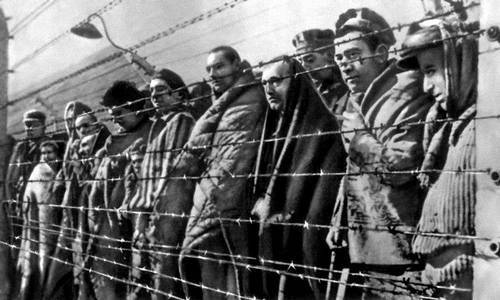
However, in order to assert that the “synthetic rubber plant” actually was a complex for the separation of isotopes, it is first necessary to prove that Germany had the technical means to separate the isotopes. In addition, if such technologies were actually applied at the “synthetic rubber plant”, it turns out that several atomic bomb projects were being carried out in Germany, for the “Heisenberg wing” and all the debates connected with it are well known. So it is necessary not only to determine whether Germany possessed isotope separation technologies, but also to try to restore the overall picture of the relationships and connections of various German atomic projects.
Isotope Separation Complex in Oak Ridge, Tennessee
Marking the question in this way, we again have to face the post-war "Allied Legend":
In the official version of the history of the creation of the atomic bomb [the head of the Manhattan Project, General Leslie] Groves claims that the plutonium bomb development program was the only one that was carried out in Germany. He inflated this incorrect information, lying on the feathers of half-truths, to unbelievable sizes, so huge that they completely obscured Germany’s efforts to enrich uranium. Thus, Groves hid from the whole world the fact that the Nazis were only two steps away from success.
Did Germany have isotope enrichment technology? And could she use this technology in sufficient quantities to get a significant amount of enriched uranium needed to build an atomic bomb?
Undoubtedly, Khidrik himself is not ready to go to the end and admit that the Germans managed to test their atomic bomb before the Americans, as part of the Manhattan Project, built and tested their own.
There can be no doubt that Germany possessed a sufficient source of uranium ore, for the Sudetenland area, annexed after the notorious 1938 Munich conference of the year, is known for its rich reserves of the purest uranium ore in the world. By coincidence, this area is also located near the Three Corners area in Thuringia in the south of Germany and, therefore, near Silesia and various plants and complexes, which will be discussed in detail in the second and third parts of this book. Therefore, the Farben management may have had another reason to choose Auschwitz as the site for the construction of a uranium enrichment complex. Auschwitz was located not only with water, transport routes and a source of labor, it was in convenient proximity to the uranium mines of the Czech Sudetes occupied by Germany.
All these circumstances allow us to put forward another hypothesis. It is well known that the statement of the German nuclear chemist Otto Hahn about the discovery of nuclear fission was made already after the Munich Conference and the transfer of the Sudetenland to Germany by Chamberlain and Daladier. Couldn't things really be a little different? What if in fact the discovery of nuclear fission was made before the conference, but the rulers of the Third Reich kept silent about it and made it public after the only source of uranium in Europe was in Germany’s hands? It is noteworthy that Adolf Hitler was ready to fight for the Sudetenland.
In any case, before embarking on the issue of technologies possessed by Germany, you must first find an answer to the question of why the Germans, apparently, focused almost exclusively on the problem of creating a uranium atomic bomb. In the end, within the framework of the American “Manhattan Project”, the issues of creating both a uranium and a plutonium bomb were studied.
The theoretical possibility of creating a plutonium-based bomb, the “94 element,” as it was officially called in the German documents of that period, was known to the Nazis. And, as follows from the memorandum of the Arms and Ammunition Directorate, prepared at the beginning of 1942, the Germans also knew that this element can only be obtained by synthesis in a nuclear reactor.
So why did Germany focus its efforts almost exclusively on the problem of isotope separation and uranium enrichment? After the Allies sabotage group destroyed a heavy water plant in the Norwegian city of Rjukan in 1942, the Germans, who could not get enough pure graphite to use as a stabilizer in the reactor, found themselves without the second stabilizer available to them - heavy water. Thus, according to the legend, the creation in the foreseeable future of a functioning nuclear reactor to produce the “94 element” in the quantities necessary for a critical mass turned out to be impossible.
But let's suppose for a moment that there was no Allied commando raid. By this time, the Germans had already broken off their teeth, trying to create a reactor with a stabilizer based on graphite, and it was obvious to them that significant technological and engineering barriers lay in the way of creating an operating reactor. On the other hand, Germany already had the technology needed to enrich the U235 in weapons-grade raw materials. Consequently, uranium enrichment was for Germans the best, most direct and technically feasible way to create a bomb in the foreseeable time. More details about this technology will be discussed below.
In the meantime, you need to deal with another component of the "legends of the allies." The creation of the American plutonium bomb from the very moment Fermi built and successfully tested a nuclear reactor at the University of Chicago sports field proceeded quite smoothly, but only until a certain point, closer to the end of the war, when it was found that to get a plutonium bomb it is necessary to collect much faster than all the fuze production technologies available to the allies allowed. Moreover, the error could not go beyond a very narrow framework, since the detonators of the explosive device had to operate as synchronously as possible. As a result, there were fears that it would not be possible to create a plutonium bomb.
Thus a rather amusing picture emerges, which seriously contradicts the official history of the creation of the atomic bomb. If the Germans really succeeded in implementing a successful large-scale uranium enrichment program around 1941 - 1944, and if their atomic project was aimed almost exclusively at creating a uranium atomic bomb, and if at the same time the allies realized what problems stand in the way of creating a plutonium bomb, This means at least that the Germans did not waste time and energy on solving a more complex task, namely, the plutonium bomb. As will be seen in the next chapter, this circumstance makes it possible to seriously doubt how successful the Manhattan Project was at the end of 1944 - the beginning of 1945.
So what is the technology of separation and enrichment of isotopes that Nazi Germany had and how effective and productive were they compared to similar technologies that were used in Oak Ridge?
No matter how hard it is to admit, the essence of the matter is that in Nazi Germany there were “at least five, and possibly seven, serious programs for the separation of isotopes.” One of them is the method of “isotope washing” developed by Dr. Bagte and Korshing (two of the scientists sharpened at Farm Hall), brought to the middle of 1944 year to such efficiency that in just one pass uranium was enriched more than four times as compared with one pass through the gas diffusion gate at Oak Ridge!
Compare this with the difficulties encountered at the end of the war by the Manhattan Project. Back in March, 1945, despite the huge gas diffusion plant at Oak Ridge, the reserves of uranium suitable for chain fission reactions were catastrophically far from the required critical mass. Several passes through the Oak Ridge plant enriched uranium from a concentration of approximately 0,7% to about 10 — 12%, which resulted in the decision to use the output of the Oak Ridge plant as a raw material for a more efficient and effective electromagnetic beta separator (beta-calyutron ) Ernsga O. Lawrence, who is essentially a cyclotron with separator tanks, in which the 1 isotopes are enriched and separated by means of electromagnetic mass spectrographic methods. Consequently, it can be assumed that if Bagte and Korsing’s “isotopic washing” method was used widely enough, this led to a rapid accumulation of reserves of enriched uranium. At the same time, more efficient German technology made it possible to locate production facilities for the separation of isotopes in significantly smaller areas.
However, no matter how good the isotope washing method was, it was not the most efficient and technologically advanced method among those that Germany had. This method was a centrifuge and its derivative, developed by a specialist in nuclear chemistry Paul Hartek - supercentrifuge. Of course, American engineers were aware of this method, but they had to face a serious problem: the extremely active gaseous compounds of uranium quickly destroyed the material from which the centrifuge was made, and therefore this method remained impracticable in a practical sense. However, the Germans managed to solve this problem. A special alloy was developed under the name "bondur", exclusively for use in centrifuges. But still not even the centrifuge was the best way that Germany had.
This technology was captured by the Soviet Union and subsequently used in its own atomic bomb program. In post-war Germany, similar supercentrifuges were manufactured by Siemens and other firms and supplied to South Africa, where they were building their atomic bomb (see Rogers and Chervenka, Nuclear Axis: West Germany and South Africa, pp. 299 — 310 ). In other words, this technology was not born in Germany, but it is perfect enough to be used in our time. It should be avenged that in the middle of the 1970-s among those who participated in the development of concentrating centrifuges in West Germany were specialists associated with the atomic bomb project in the Third Reich, in particular, Professor Karl Winnaker, a former board member of the I. G. Farben.
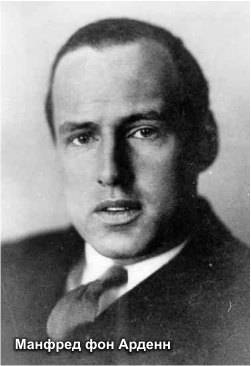 Baron Manfred von Ardenne, an eccentric rich man, an inventor and nuclear physicist with no education, and his associate physicist Fritz Houtermans, in 1941, correctly calculated the critical mass of the atomic bomb based on U235 and at the expense of Dr. Eng. Baron Lichterfelde in the eastern suburbs of Berlin is a huge underground laboratory. In particular, this laboratory had an 2 000 000 volt electrostatic generator and one of the two cyclotrons available in the Third Reich — the second was the cyclotron in the Curie laboratory in France. The existence of this cyclotron recognizes the post-war "legend of the allies."
Baron Manfred von Ardenne, an eccentric rich man, an inventor and nuclear physicist with no education, and his associate physicist Fritz Houtermans, in 1941, correctly calculated the critical mass of the atomic bomb based on U235 and at the expense of Dr. Eng. Baron Lichterfelde in the eastern suburbs of Berlin is a huge underground laboratory. In particular, this laboratory had an 2 000 000 volt electrostatic generator and one of the two cyclotrons available in the Third Reich — the second was the cyclotron in the Curie laboratory in France. The existence of this cyclotron recognizes the post-war "legend of the allies."We’ll linger at this place to take a closer look at the German atomic program, because now we already have evidence of the existence of at least three different and, apparently, unconnected technologies:
1) The program of Heisenberg and the army, centered around Heisenberg himself and his associates in the institutes of Kaiser Wilhelm and Max Planck, purely laboratory efforts, limited by the vanity of creating a reactor. It is on this program that the "legend of the allies" focuses, and it is it that comes to the mind of most people when they mention the German atomic program. This program is deliberately included in the "legend" as proof of the stupidity and incompetence of German scientists.
2) Plant for the production of synthetic rubber of the I. G. Farben ”in Auschwitz, whose connection with other programs and with the SS is not completely clear.
3) Circle of Bagge, Korsching and von Ardenne, who developed a whole range of perfect methods for separating isotopes and, through von Ardennes, somehow connected - just think! - with the German postal service.
But what have the Reichspost? To begin with, it provided effective cover for the atomic program, which, like its American counterpart, was distributed among several government departments, many of which had nothing to do with the ambitious work on the creation of secret weapons. Secondly, and this is much more important, the Reichspost just bathed in money and, therefore, could provide at least partial funding for the project, in every sense of the “black hole” in the budget. And finally, he headed the German postal service, perhaps not by accident, as an engineer, doctor-engineer of Onesorg. From the point of view of the Germans, this was a perfectly logical choice. Even the surname of the manager, Onezorge, which in translation means “not knowing repentance and regret,” could not be more out of place.
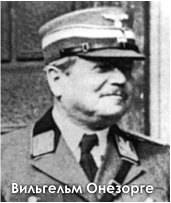 So what is the method of separation and enrichment of isotopes developed by von Ardenne and Hautermans? Very simple: it was the cyclotron itself. Von Ardenn added to the cyclotron the improvement of his own invention - electromagnetic separation tanks, very similar to Ernst O. Lawrence's beta-ka-lyutron in the United States. It should be noted, however, that von Ardenne’s improvements were ready in April 1942, while the head of the Manhattan Project, General Groves, received Lawrence’s beta calutron for use at Oak Ridge only a year and a half after that! 1 We must also add that the source of ionic plasma for the sublimation of uranium-containing raw materials, developed by Ardenne for its isotope separator, was significantly superior to that used in calutrons. Moreover, it turned out to be so efficient that the source of radiation of charged particles, invented by von Hardenne, is still known as the “Ardenne source”.
So what is the method of separation and enrichment of isotopes developed by von Ardenne and Hautermans? Very simple: it was the cyclotron itself. Von Ardenn added to the cyclotron the improvement of his own invention - electromagnetic separation tanks, very similar to Ernst O. Lawrence's beta-ka-lyutron in the United States. It should be noted, however, that von Ardenne’s improvements were ready in April 1942, while the head of the Manhattan Project, General Groves, received Lawrence’s beta calutron for use at Oak Ridge only a year and a half after that! 1 We must also add that the source of ionic plasma for the sublimation of uranium-containing raw materials, developed by Ardenne for its isotope separator, was significantly superior to that used in calutrons. Moreover, it turned out to be so efficient that the source of radiation of charged particles, invented by von Hardenne, is still known as the “Ardenne source”.In any case, the work of von Ardenne, as well as the work of other German scientists involved in the enrichment and separation of isotopes, Bagge, Korshing, Hartek and Haugermans, point to the following: Allied assessments made during the war regarding the progress of the atomic bomb in Nazi Germany, they were completely justified, because by the middle of 1942, the Germans were significantly ahead of the “Manhattan Project”, and not hopelessly behind, as a legend born after the war assured us.
At one time, Samuel Goodsmith’s participation in the sabotage group, the task of which was the abduction or removal of Heisenberg, was considered.
So what does the most likely scenario look like taking into account all the facts stated? And what conclusions can be drawn?
1) In Germany, there were several programs for uranium enrichment and the creation of an atomic bomb, for security reasons divided between different departments, which, perhaps, were coordinated by a single body, the existence of which is still unknown. In any case, it appears that one such serious program was at least nominally led by the German postal service and its head, Dr. Engineer Wilhelm Ohnesorge.
2) The most significant enrichment and isotope separation projects were not led by Heisenberg and his circle; none of the most prominent German scientists took part in them, with the exception of Harteck and Diebner. This suggests that, perhaps, the most famous scientists were used as a cover, for reasons of secrecy, without being involved in the most serious and technically advanced work. If they participated in such works and the allies kidnapped or liquidated them - and such a thought undoubtedly crossed the mind of the German leadership - then the program for creating an atomic bomb would become known to the allies or it would be dealt a tangible blow.
3) At least three technologies available to Germany were presumably more efficient and technically advanced than those of the Americans:
a) the method of “washing the Bagge and Korsing isotopes;
b) Hartek centrifuges and supercentrifuges;
c) improved von Ardenne cyclotron,
"Source of the ardenne".
4) At least one of the well-known complexes is the plant for the production of synthetic rubber of the I. G. Farben ”in Auschwitz - was large enough in terms of its territory, labor force and electricity consumption, to be an industrial complex for isotope separation. This statement looks quite reasonable, since:
a) despite the fact that the complex employed thousands of scientists and engineers and tens of thousands of civilian workers and concentration camp prisoners, not a single kilogram of buna was produced;
b) the complex, located in Polish Silesia, was located near the uranium mines of the Czech and German Sudetenlands;
c) the complex was located near significant sources of water, which is also necessary for isotope enrichment;
d) railway and motorways passed nearby;
e) there was a practically unlimited source of labor nearby;
f) and, finally, although this point has not yet been discussed, the complex was located not far from several large underground centers for the development and production of secret weapons located in Lower Silesia, and near one of two test sites, where during the war the German atomic was allegedly tested. bombs.
5) There is every reason to assume that, in addition to the “synthetic rubber plant,” the Germans built several smaller plants for the separation and enrichment of isotopes in that area, using the products of the Auschwitz complex as their raw materials.
Power also mentions another problem related to the Clusius-Dickel thermal diffusion method, which we will encounter in the 7 chapter: “One pound of U-235 is not such an unattainable figure, and Frish calculated that with one million pipes Clusius - Dickel for thermal diffusion of uranium isotopes such an amount can be obtained in just a few weeks. Of course, the creation of such a production would be expensive, but Frisch summed up the following result: “Even if such a plant costs as much as a battleship costs, it’s better to have it.”
To complete this picture, we should also mention two very interesting facts.
The specialty of a close ally and theoretical mentor von Ardenne Dr. Fritz Hautermans was thermonuclear fusion. Indeed, as an astrophysicist, he made a name for himself in science, describing the nuclear processes occurring in stars. Interestingly enough, there is a patent issued in Austria in 1938 for a device called the “molecular bomb”, which when closely examined turns out to be nothing more than a prototype thermonuclear bomb. Of course, in order to force the hydrogen atoms to collide and release the much more enormous and terrible energy of the thermonuclear fusion hydrogen bomb, heat and pressure are needed, which can only be obtained by the explosion of a conventional atomic bomb.
Secondly, and it will soon become clear why this circumstance is of such importance. Of all the German scientists who worked on the creation of the atomic bomb, it was Manfred von Ardenn who was the one who was most often personally visited by Adolf Hitler.
In any case, all the facts indicate that in Nazi Germany during the war years there was a significant, very well-funded, top-secret isotope enrichment program, a program that the Germans managed to successfully hide during the war, and after the war it was covered by the "Allied legend." However, new questions arise. How close was this program to the accumulation of weapons-grade uranium sufficient to make a bomb (or bombs)? And, secondly, why did the Allies spend so much energy after the war to keep it secret?
The final chord of this chapter and a breathtaking indication of other secrets that will be explored later in this book will be a report declassified by the National Security Agency only in 1978 year. The report, apparently, contains a decryption of the intercepted message transmitted from the Japanese Embassy in Stockholm in Tokyo. It is entitled The Atom Splitting Bomb Report. It is best to bring this amazing document in its entirety, with the omissions that were obtained by decrypting the original message.
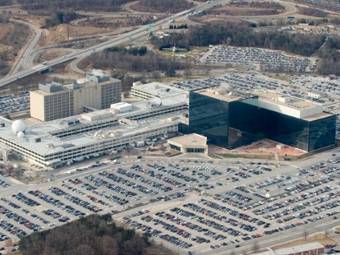 The National Security Agency (NSA) is a department within the Department of Defense of the United States that deals with the protection of government and military communications and computer systems, as well as electronic surveillance.
The National Security Agency (NSA) is a department within the Department of Defense of the United States that deals with the protection of government and military communications and computer systems, as well as electronic surveillance.This bomb, revolutionary in its effects, will completely overturn all the established concepts of conventional warfare. I send you all the reports on what is called an atom-splitting bomb:
Part of 2. The following material is given according to the testimony of Lieutenant Colonel Ue (?) Kenji, an adviser to the attache in Hungary and in the past (who worked?) In this country, who happened to see the consequences of what happened immediately after it happened:
"All the people and horses (? In the area?) Of the explosion of shells were charred to blackness, and even all the ammunition was removed."
Moreover, it is reliably known that this same type of weapon was also tested in the Crimea. Then the Russians accused the Germans of using poisonous gases and threatened that if this happened again, they would also use combat poisonous substances in response.
Part of 3- It is also necessary to take into account the fact that the last time in London - and the period between the beginning of October and 15 of November - fires of unknown origin caused great loss of life and serious destruction of industrial buildings. If we also take into account articles about this type of weapon that have recently appeared in English and American magazines from time to time, it becomes obvious that even our opponent has already begun to deal with them.
I will summarize the essence of all these reports: I am convinced that the most important breakthrough in a real war will be the implementation of a bomb project based on the splitting of an atom. Consequently, the authorities of all countries are striving to accelerate research in order to obtain practical implementation of these weapons as soon as possible. For my part, I am convinced of the need to take the most decisive steps in this direction.
Part of 4. The following is what I was able to figure out regarding the technical characteristics:
Recently, the British government warned citizens about the possible strikes of German bombs on the basis of the splitting of the atom. The US military leadership also warned that the east coast of the United States could be chosen as a target for the inappropriate strikes of some German flying bombs. They were called "V-3". More specifically, this device is based on the principle of the explosion of the nuclei of heavy hydrogen atoms, obtained from heavy water. (Germany has a large plant (for the production of it?) In the vicinity of the Norwegian city of Ryu-kan, which is sometimes bombed by British aircraft.) Naturally, there have long been enough examples of successful attempts at splitting individual atoms. But,
Part 5.
with regard to practical results, no one yet seems to have been able to split a large number of atoms at once. That is, the splitting of each atom requires a force that destroys the electron orbit.
On the other hand, the substance that the Germans use seems to have a very high specific gravity, meaning superior to all that has been used so far.
since then SIRIUS and the stars of the “White Dwarfs” group were mentioned in this connection. Their specific gravity is (6?) 1 thousand, and only one cubic inch weighs a whole ton.
Under normal conditions, atoms cannot be compressed to the density of nuclei. However, the enormous pressure and incredibly high temperatures in the body of “white dwarfs” lead to the explosive destruction of atoms; and
Part 6.
moreover, radiation emanating from the heart of these stars, consisting of what remains of the atoms, that is, of the nuclei alone, which are very small in volume.
According to an article in a British newspaper, the German atom-splitting device is the Neumann separator. Huge energy is sent to the central part of the atom, forming a pressure of several tons of thousands of tons (as in the original. - D.F.) per square inch. This device is capable of splitting relatively unstable atoms of elements such as uranium. Moreover, it can serve as a source of explosive atomic energy.
A-HENS HAKAI DAN.
That is a bomb, drawing its strength from the release of atomic energy.
The end of this astounding document looks like this: “Intercept 12 Dec 44 (1,2) Japanese; Receive 12 Dec 44; Before 14 Dec 44 (3020-B) ". This appears to be a reference to when the message was intercepted by the Americans, to the original language (Japanese), to when it was received and when it was transmitted (14 decks 44), and also by whom (3020-B).
The date of this document - after the test of an atomic bomb allegedly observed by Hans Zinsser, and two days before the start of the German counteroffensive in the Ardennes - was supposed to cause the Allied intelligence to sound the alarm both during and after the war. Although it is obvious that the Japanese attaché in Stockholm is very vague about the nature of nuclear fission, several striking points are highlighted in this document:
The message “From Stockholm to Tokyo” is quoted, 232.9 number December 1944 (military department), national archive, RG 457, sra 14628-32, declassified 1 October 1978 of the year.
1) according to the report, the Germans used some kind of weapons of mass destruction on the Eastern Front, but for some reason refrained from using it against the Western allies;
a) the places are precisely indicated - the Kursk Bulge, the southern component of the German offensive directed from both sides, which took place in July, not June 1943, and the Crimean Peninsula;
b) 1943 is indicated as the time, although, since large-scale hostilities were conducted in Crimea only in 1942, when the Germans subjected Sevastopol to massive artillery fire, it should be concluded that the time interval actually stretches until 1942.
In this place it is not bad to make a small digression and to briefly examine the Germans' siege of the Russian fortress of Sevastopol, the place of the most massive shelling throughout the war, since this is directly related to a correct understanding of the meaning of the intercepted message.
The siege was led by the 11-I army under the command of Colonel-General (later Field Marshal) Erich von Manstein. Von Manstein assembled 1300 artillery shells - the largest concentration of heavy and super heavy artillery by any power during the war - and for five days, twenty-four hours a day, struck Sevastopol. But these were not ordinary large-caliber field guns.
Two artillery regiments — the 1 th regiment of heavy mortars and the 70 th mortar regiment, as well as the 1 th and 4 th mortar battalions under the special command of Colonel Niemann — were only twenty-one batteries of the total number of 576 guns, including batteries of the 1 th regiment of heavy mortars, shooting eleven- and twelve-with-half-inch high-explosive and incendiary oil shells ...
"Big Berta"
But even these monsters were not the largest weapons among those that were located near Sevastopol. The Russian positions were fired by several Big Burt Krupps with an 16,5 caliber of inch and their old Austrian Skoda brothers, as well as even more colossal Karl and Thor mortars, giant self-propelled 24 mortar inches, which fired projectiles weighing over two tons.
Mortar "Karl"
But even "Karl" was not the last word of artillery. The most powerful weapon was placed in Bakhchisarai, in the Palace of Gardens, the ancient residence of the Crimean khans, and was called “Dora” or, more rarely, “Heavy Gustav”. It was the largest caliber gun that was used in this war. His caliber was 31,5 inches. To transport this monster by rail, 60 cargo platforms were required. A barrel length of 107 feet threw a high-explosive projectile weighing 4800 kilograms - that is almost five tons - over a distance of more than 29 miles. The gun could also fire even heavier armor-piercing shells weighing seven tons at targets located at a distance of 24 miles. The cumulative length of the projectile with the shell was nearly twenty-six feet. Placed on top of each other, they would have heights of a two-story house.
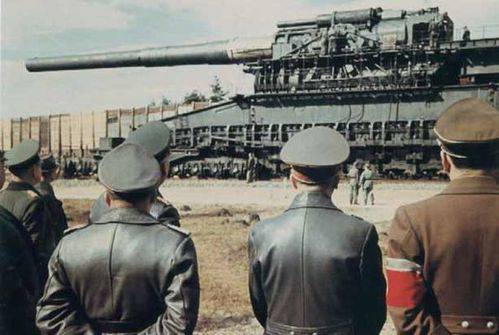
This data is enough to show that we have before us a conventional weapon, enlarged to enormous, simply unimaginable dimensions, so that the question may arise about the economic feasibility of such weapons. However, one, the only projectile fired from Dora, destroyed an entire artillery depot in the North Bay near Sevastopol, although the tog was built at a depth of one hundred feet underground.
The shelling from these heavy and super-heavy guns was so monstrous that, according to the estimates of the German headquarters, more than five hundred shells and bombs fell every second for five days of continuous shelling and aerial bombardment. The heavy downpour that fell on the positions of the Soviet troops tore the fighting spirit of the Russians to shreds; the roar was so unbearable that the eardrums burst. By the end of the battle, the city of Sevastopol and its environs were completely destroyed, two Soviet armies were destroyed and over 90 000 people were captured.
Why do these details matter? First, pay attention to the mention of "incendiary oil projectiles". This is evidence that near Sevastopol the Germans used some unusual weapon, the delivery vehicle of which was conventional, although very large artillery pieces. The German army did possess such projectiles and often used them with high efficiency on the Eastern Front.
And what if in fact we are talking about even more terrible weapons? In the future, we will present evidence that the Germans did indeed succeed in developing a prototype of a modern vacuum bomb made on the basis of conventional explosives of a device that is destructively comparable to a tactical nuclear charge. Taking into account the significant weight of such projectiles and the fact that the Germans did not have enough heavy bombers, it seems quite possible and even probable that they were used to deliver super-heavy artillery. It will also explain another strange fact in the report of the Japanese military attache: apparently, the Germans did not use weapons of mass destruction to attack large populated areas, but used them only on military targets located within the radius of action of such systems. Now you can continue the analysis of the report of the Japanese diplomat.
2) Perhaps the Germans seriously studied the possibility of creating a hydrogen bomb, since the interaction of the nuclei of heavy water atoms containing deuterium and tritium is the essence of the thermonuclear fusion reaction, which the Japanese attache noted (although he confuses such a reaction with the nuclear fission reaction in a conventional atomic bomb) ... This assumption is supported by the pre-war works of Fritz Houtermans, devoted to thermonuclear processes taking place in stars;
3) the enormous temperature and pressure resulting from the explosion of an ordinary atomic bomb are used as a detonator for a hydrogen bomb;
4) in despair, the Russians were ready to use chemical warfare agents against the Germans, if they continued to use their new weapons;
5) the Russians considered these weapons to be some kind of "poisonous gas": in this case, we are talking either about a legend composed by the Russians, or about an error that arose as a result of eyewitness accounts, ordinary Russian soldiers who had no idea what kind of weapon was against them applied; and finally, the most sensational fact,
Charred corpses and detonated ammunition definitely indicate that no conventional weapon was used. Charred corpses can be explained by a vacuum bomb. It is possible that a huge amount of heat released during the explosion of such a device could lead to the detonation of ammunition. Similarly, radiation burns with the characteristic formation of blisters, Russian soldiers and officers, who most likely had no idea of nuclear energy, could have taken the consequences of exposure to a poison gas.
6) according to Japanese encryption, the Germans, apparently, obtained this knowledge through communication with the star system of Sirius, and an unprecedented form of very dense matter played a significant role. To believe this statement is not easy even today.
It is the last point that directs our attention to the most fantastic and mysterious part of the research on the creation of secret weapons, conducted during the war years in Nazi Germany, because if this statement is true at least in part, this indicates that in the Third Reich, work was conducted in the strictest secrecy in completely unknown areas of physics and esoterics. In this regard, it is important to note that the extraordinary density of matter described by the Japanese envoy most closely resembles the concept of post-war theoretical physics, called “black matter”. In all likelihood, in his report, the Japanese diplomat significantly overestimates the specific density of the substance - if there was one at all - and yet it is necessary to pay attention to the fact that it still many times exceeds the specific density of ordinary matter.
Strange as it may seem, the connection between Germany and Sirius resurfaced many years after the war, and in a completely unexpected context. In my book, The Giza War Machine, I mentioned the research of Robert Temple, who was involved in the secret Dogon African tribe, which is at a primitive level of development, but nevertheless retains accurate knowledge of the star system (Sirius for many generations, from that distant time, when modern astronomy did not exist. In this book, I noted that
For those familiar with the abundance of materials from alternative studies of the complex at Giza in Egypt, the reference to Sirius immediately evokes the images of the Egyptian religion, closely related to the Death Star, the myth of Osiris and the star system of Sirius.
Temple also claims that the Soviet KGB and the American CIA and NSA showed serious interest in his book ... And another strange remark, perhaps acquiring meaning in the light of our subsequent discussion of research by German scientists in scalar physics during World War II War and after it. Temple claims that Baron Yesco von Puttkamer sent him an expose letter written on NASA official letterhead, but later refused it, stating that the letter does not reflect the official position of NASA. Temple believes that Puttkamer was one of the German scientists who were sent to the United States as part of Operation Clips immediately after the surrender of Nazi Germany.
As I later said in my book, Karl Jesco von Puttkamer was not a simple German. During the war, he was a member of the military council of Adolf Hitler, adjutant for naval affairs fleet. Starting the war with the rank of captain, by the end of it he became an admiral. Subsequently, Puttkamer worked at NASA.
Thus, the study of the problems of the German atomic bomb through this recently declassified Japanese encrypted message brought us far away into the realm of frightening hypotheses, into the world of vacuum bombs, giant artillery pieces, super-dense matter, hydrogen bomb and a mysterious mixture of esoteric mysticism, Egyptology and physics.
Did Germany have an atomic bomb? In the light of the above material, the answer to this question seems simple and straightforward. But if this is true, then. Taking into account the incredible reports that came from time to time from the Eastern Front, a new mystery arises: what other more secret research was hidden behind the atomic project, because, of course, such studies were conducted?
However, let us leave aside exotic superdense matter. According to some versions of the "Allied Legends", the Germans did not manage to accumulate a sufficient amount of fissionable weapons-grade uranium, necessary for the creation of a bomb.
References:
Critical Mass, Critical Mass Media, Internet published manuscript, www.3dshortxom/nazibornb2/CRmCALAlASS.txt, 1998, p.
Joseph Borkin, The Crime and Punishment of lG Farben; Anthony With Sutton, Wall Street and the Rise of Hitler.
Carter P. Hydrick, op. cit, p. 34.
Sapieg P. Hyctrick, op. cit., p. 38.
Paul Carrell, Hitler Moves East, 1941-1943 (Ballantine Books, 1971) pp. 501-503
Joseph P. Farrell, The Giza Death Star Deployed (Kempton, Illinois: Adventures Unlimited Press, 2003, p. 81).
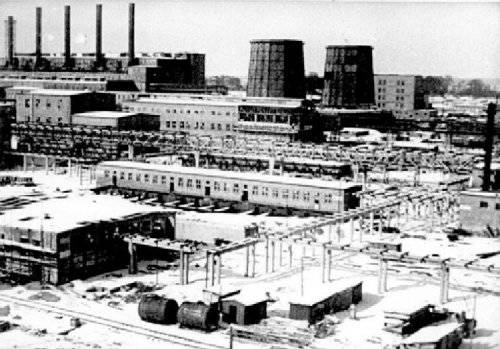
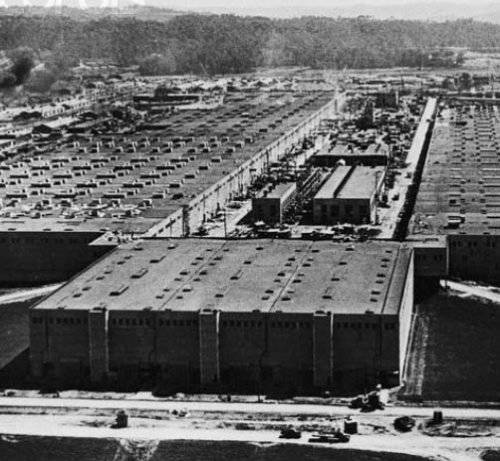
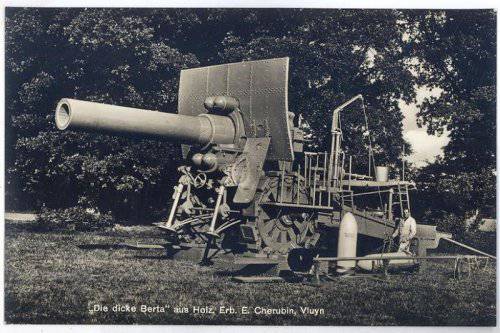
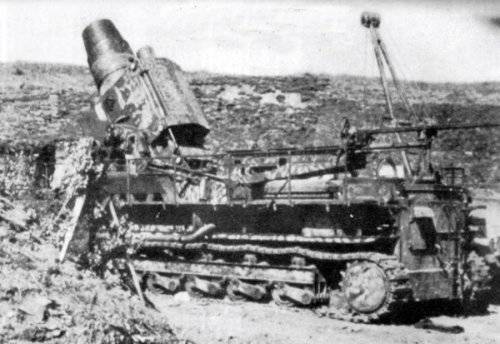
Information